iWaylink IT7000PDT PDT(Portable Data Terminal) User Manual IT7000 Users Guide 122704 for EMI
Bitatek Co., Ltd. PDT(Portable Data Terminal) IT7000 Users Guide 122704 for EMI
iWaylink >
Contents
User manual 4
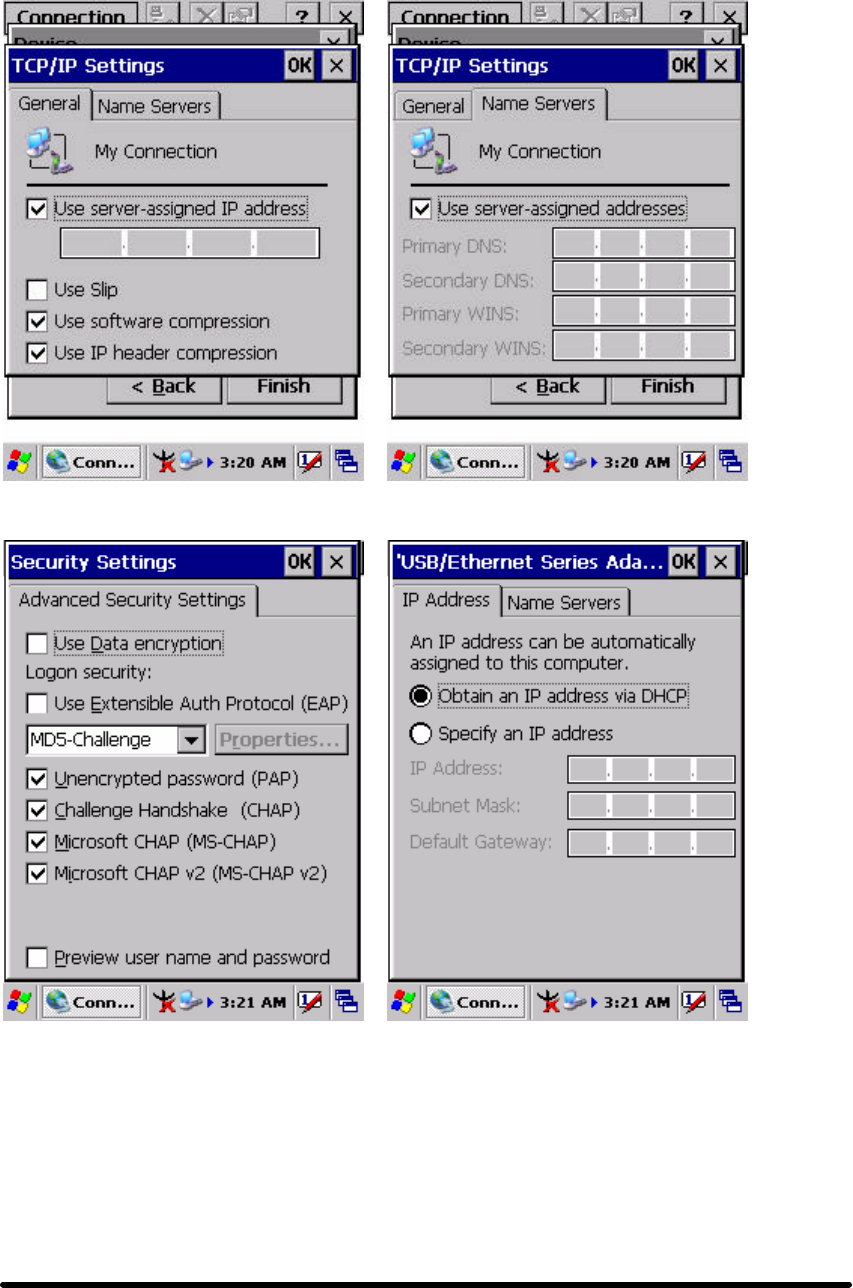
P3-48
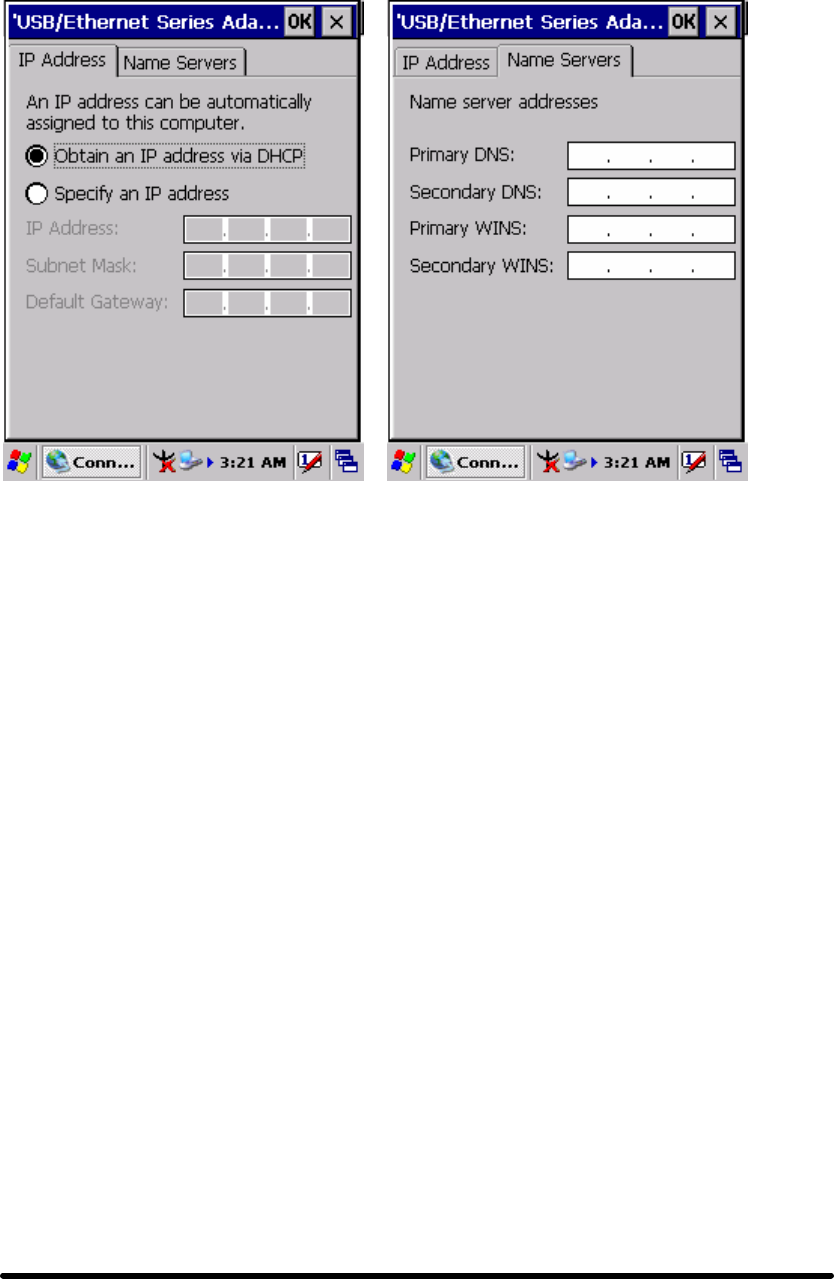
P3-49
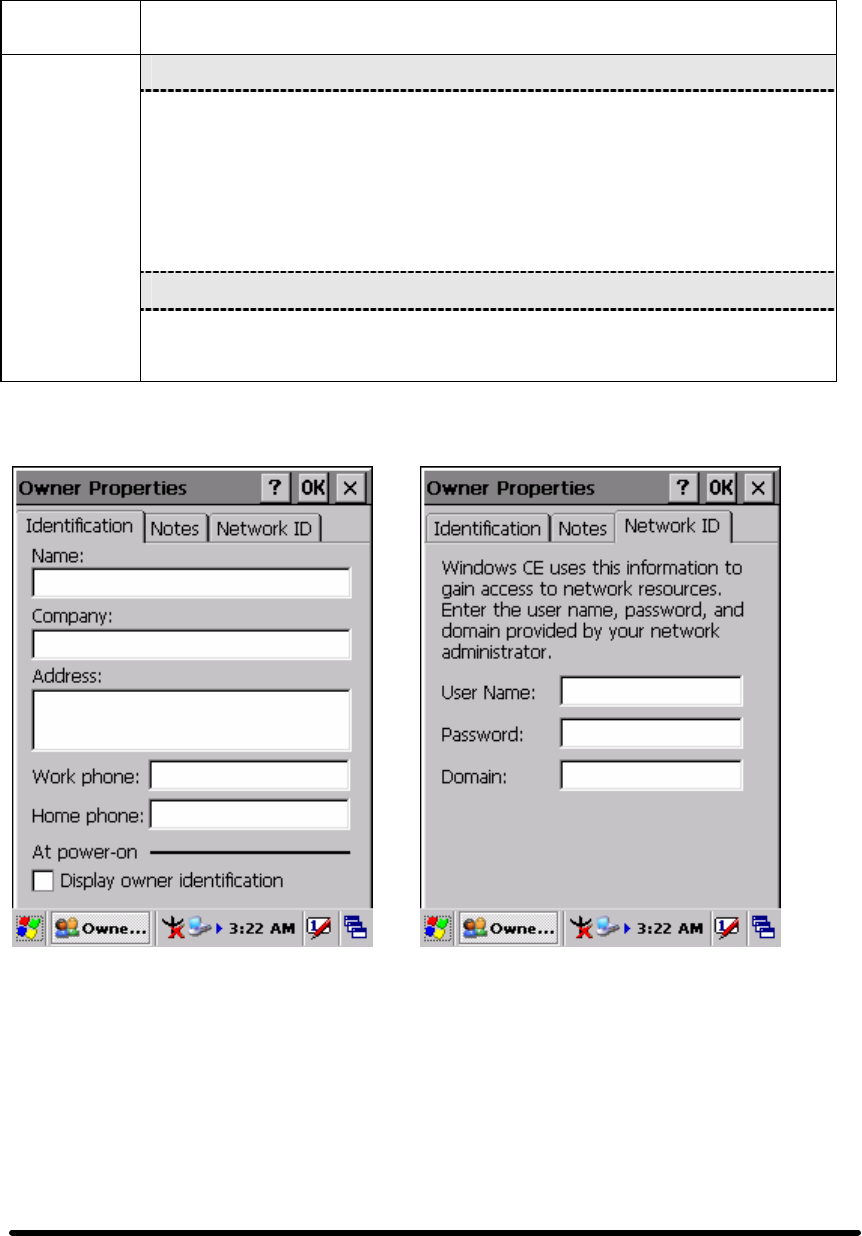
3.2.17 Owner
Table 3-16 Owner
ICON ITEM & FUNCTION
l “Identification” Tab : (Figure 3-15-1)
ü Fill in or edit the data as desired.
ü To have this information displayed when you start your device,
select “Display Owner Identification” at Power On.
ü To set up identification for remote networks, see Setting up
identification for remote networks.
l “Network ID” Tab: (Figure 3-15-2)
Owner
ü Enter the user name, password, and domain name you use to log
on to remote network.
Figure 3-15-1 Figure 3-15-2
P3-50
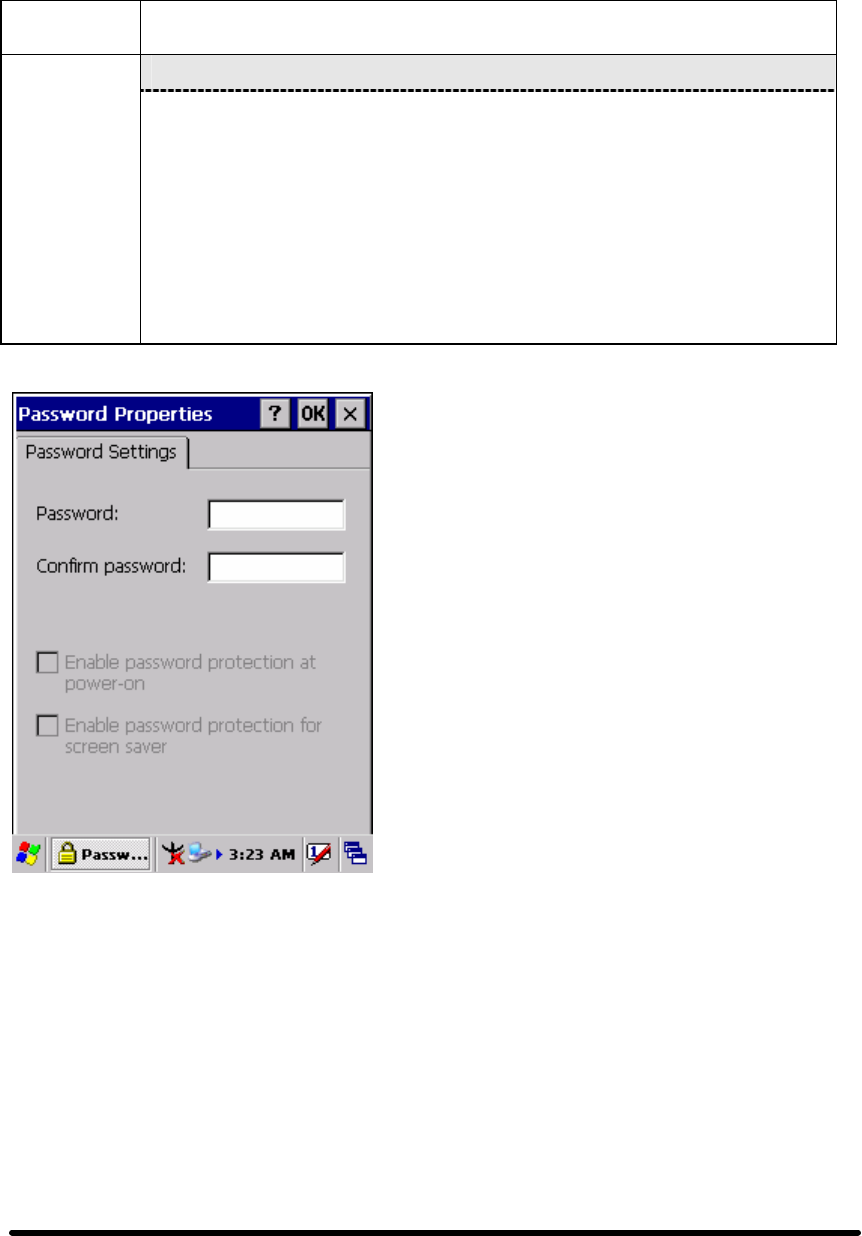
3.2.18 Password
Table 3-17 Password
ICON ITEM & FUNCTION
l “Password Setting” Tab : (Figure 3-16)
Password ü Enter the password
ü In the “Confirm password “box, enter the password again.
ü To require the password on startup, select “Enable password
protection at power- on“. and/or select “Enable password
protection for screen saver”
ü To exit the Password control panel, press “OK” from the
control bar, or press the <Enter> key on the keypad.
Figure 3-16
P3-51
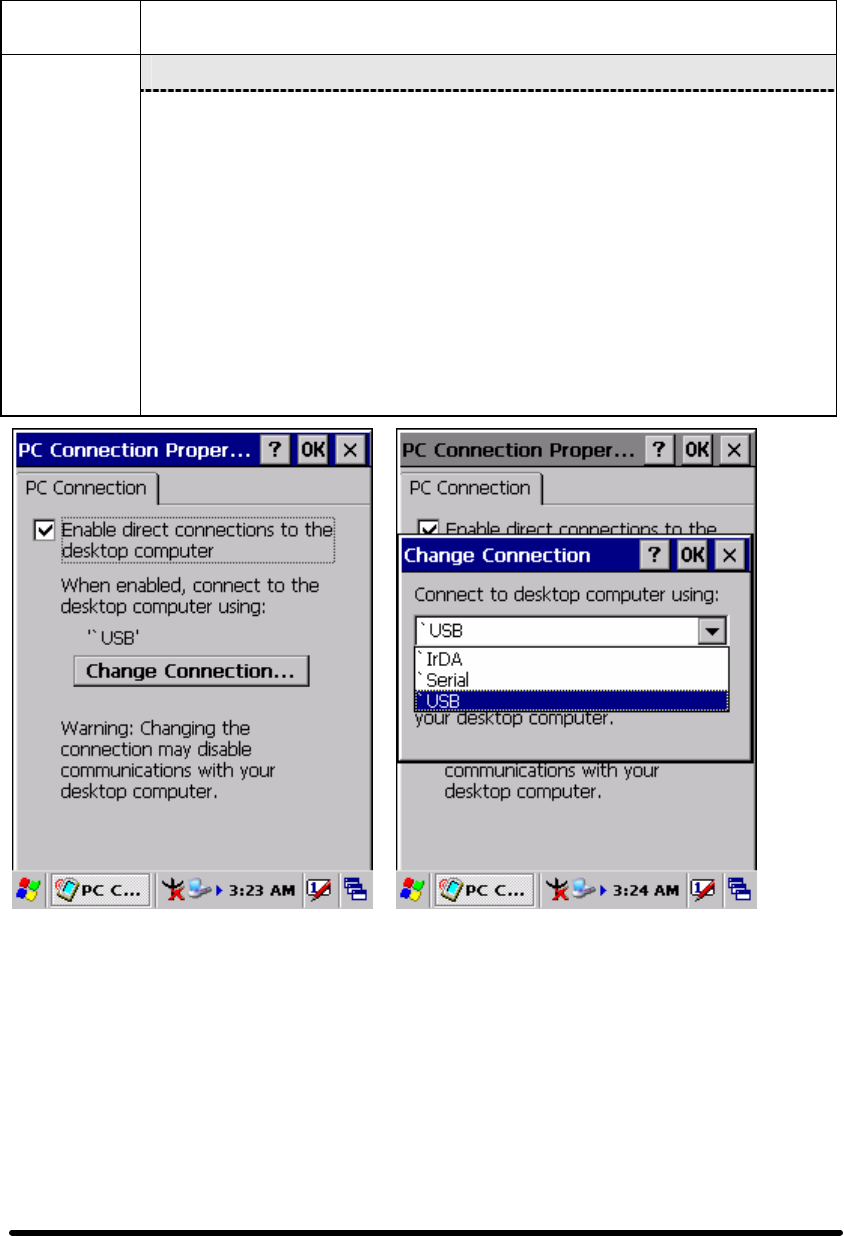
3.2.19 PC Connection
Table 3-18 PC Connection
ICON ITEM & FUNCTION
l “PC Connection” Tab : (Figure 3-17-1)
PC
Connection
ü Select the first checkbox to enable direct connections to the
desktop computer. (Figure 3-17-1)
ü Tap the “Change Connection…” button to modify the
connection method from USB, IrDA, or Serial. (Figure 3-17-2)
ü To exit the “Change Connection” dialog, press “OK” from the
control bar, or press the <Enter> key on the keypad.
ü To exit the “PC Connection” properties control panel, press
“OK” from the control bar, or press the <Enter> key on the
keypad.
Figure 3-17-1 Figure 3-17-2
P3-52
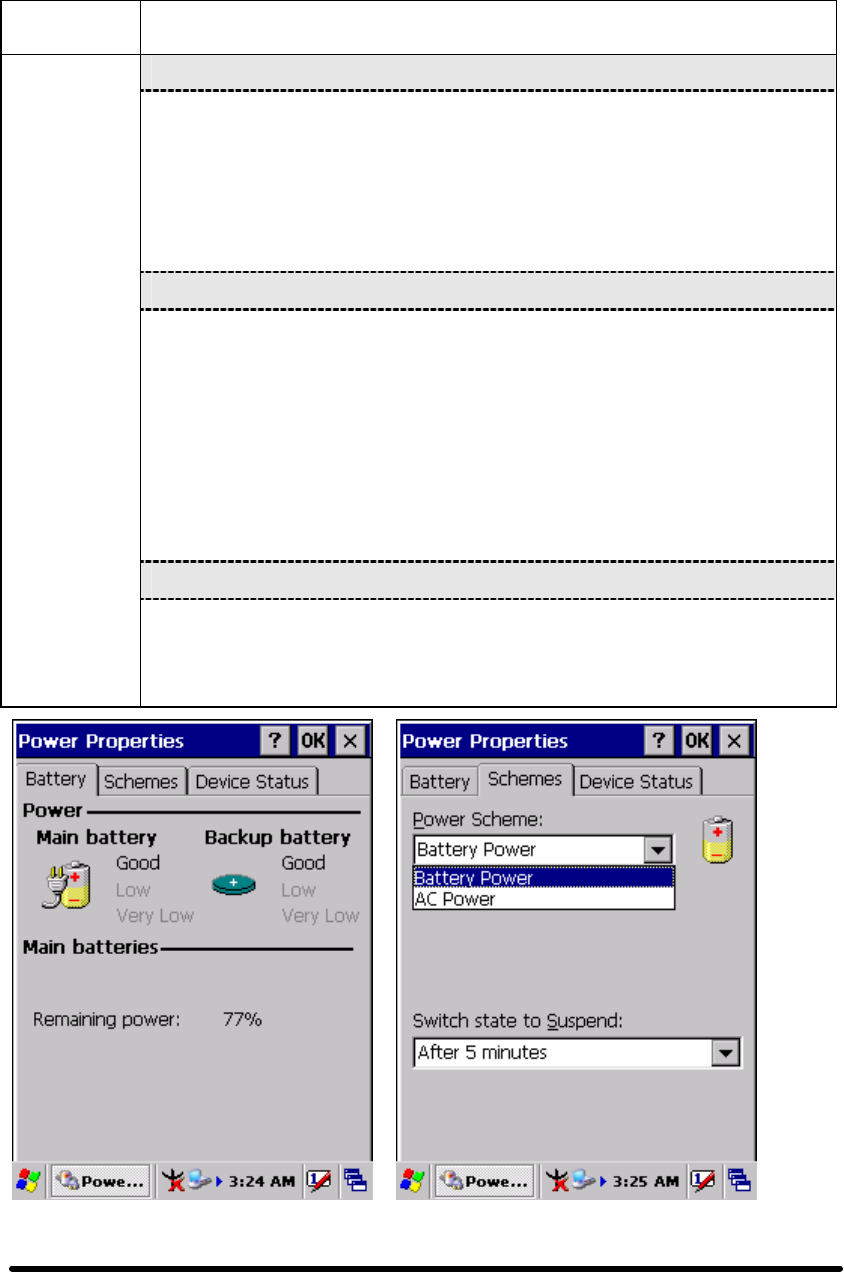
3.2.20 Power
Table 3-19 Power
ICON ITEM & FUNCTION
l “Battery” Tab : (Figure 3-18-1)
ü Provide change level indicators for Main battery and Backup
battery.
ü To exit Battery control panel, press “OK” from the command
bar, or press <Enter> key on keypad.
l “ Schemes” Tab: (Figure 3-18-2)
ü The Scheme Tab allows you to determine the time to switch
state to Suspend mode when using either Battery Power or AC
Power.
ü Select Battery Power or AC Power as the power scheme from
the pull-down list.( Figure 3-18-2)
ü Select the time to suspend mode from the pull-down list.
( Figure 3-18-3)
l “Device Status” Tab: ( Figure 3-18-4)
Power
Provide power level of device – The power level ranges from
“ High(D0)” which means the device is at the highest power level to
“Off(D4)” which means the device is at the lowest power level.
Figure 3-18-1 Figure 3-18-2
P3-53
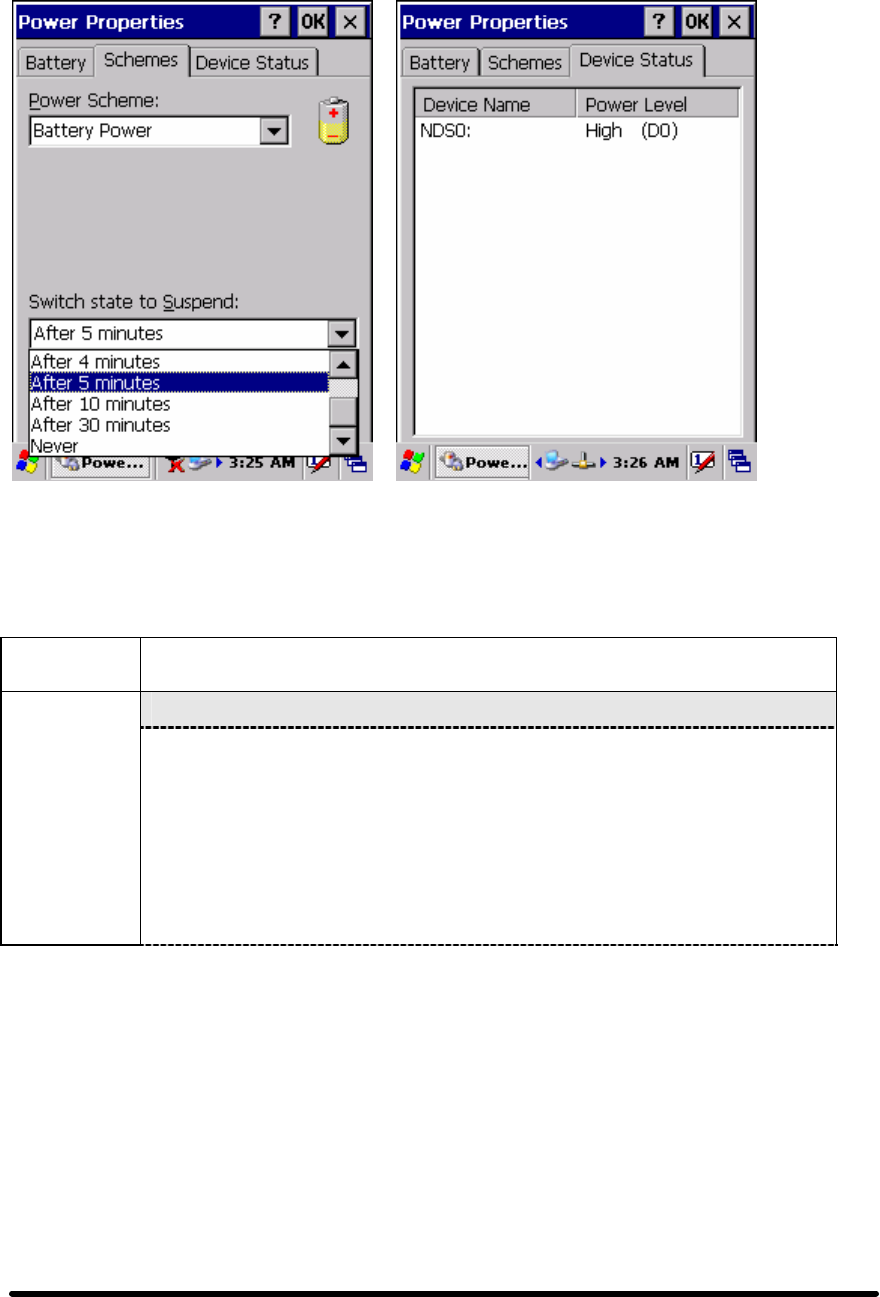
Figure 3-18-3 Figure 3-18-4
3.2.21 Regional Settings
Table 3-20 Regional Settings
ICON ITEM & FUNCTION
l “Region” Tab : (Figure 3-19-1)
Regional
Settings
ü Select the desired location/language.
ü Review the Appearance samples in the bottom half of the
screen.
ü Select the Tab at the top for any settings you wish to change,
Options to modify include Number, Currency, Time, and Date.
( Figure 3-19-3 ~ Figure 3-19-9)
P3-54
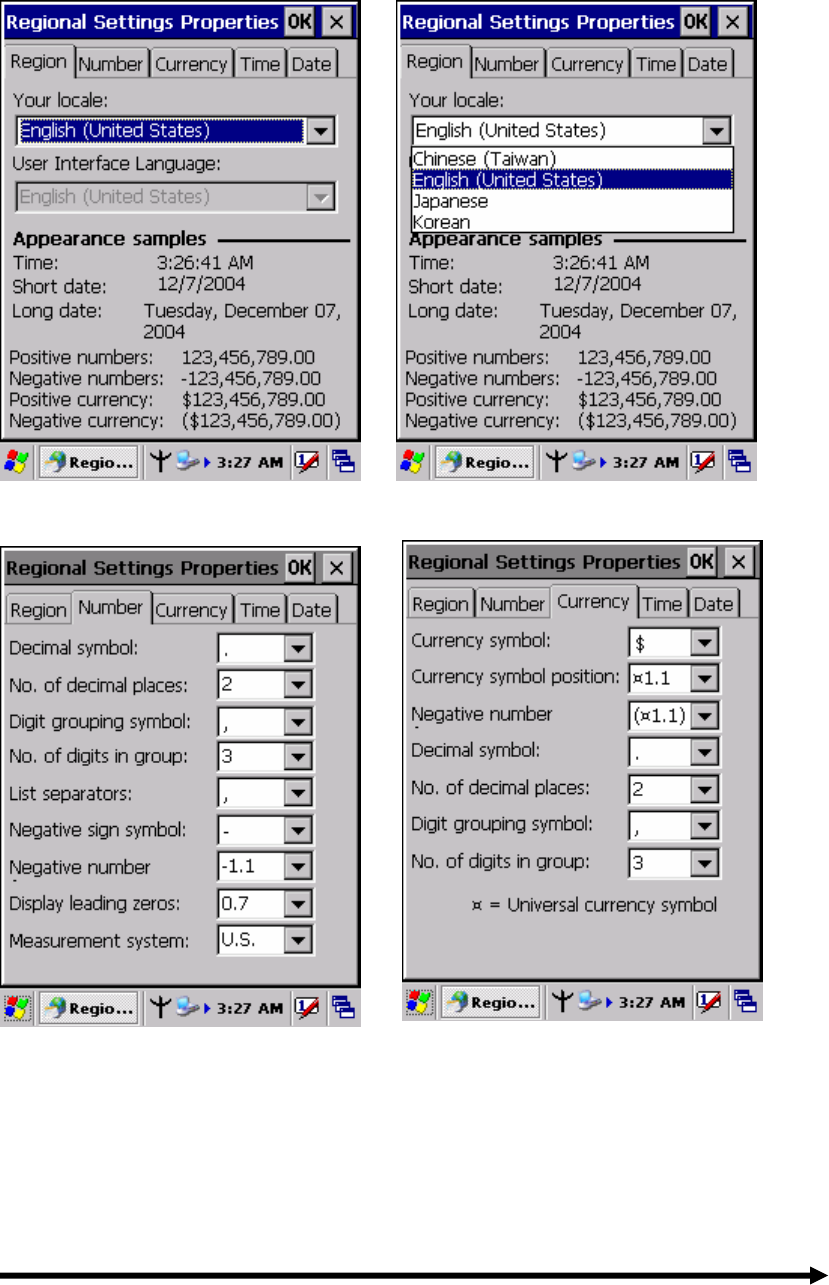
Figure 3-19-1 Figure 3-19-2
Figure 3-19-3 Figure 3-19-4
P3-55
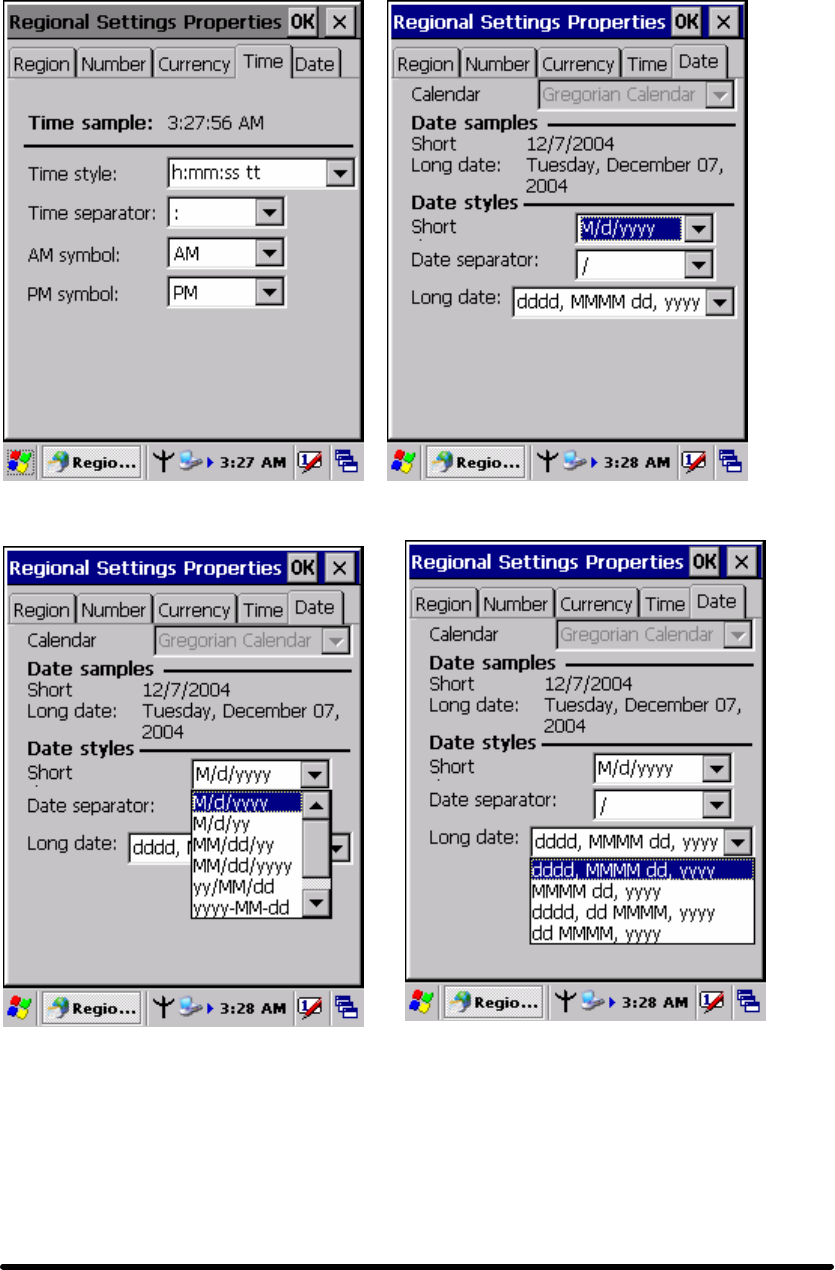
Figure 3-19-5 Figure 3-19-6
Figure 3-19-7 Figure 3-19-8
P3-56
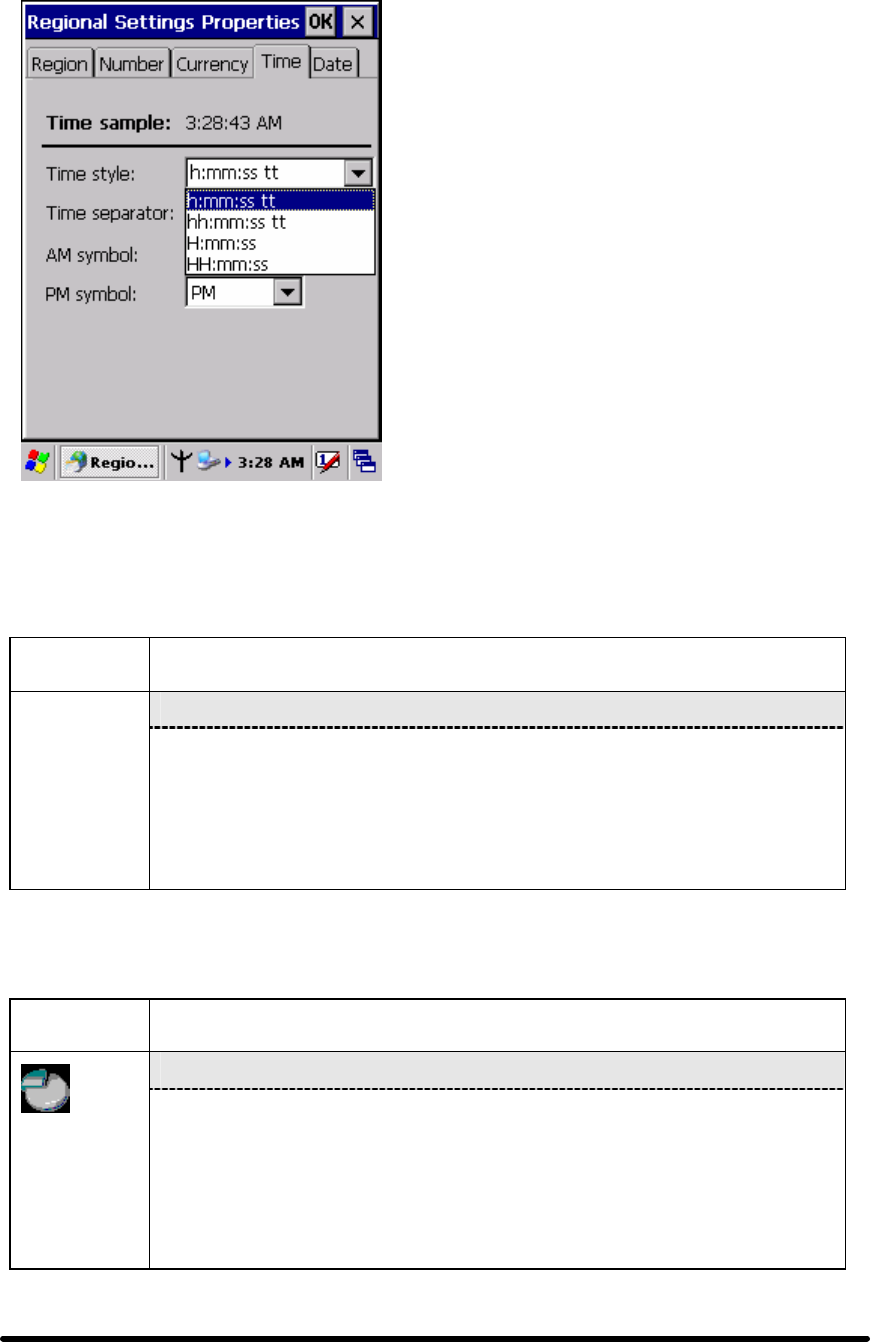
Figure 3-19-9
3.2.22 Remove Programs
Table 3-21 Remove Programs
ICON ITEM & FUNCTION
l “Remove Programs ” Tab :
Remove
Programs
ü Only user installed programs can be removed.
Ø Select the program you wish to remove from the list and press
“remove” button.
3.2.23 Storage Manager
Table 3-22 Storage Manager(A)
ICON ITEM & FUNCTION
l “Storage Manager” Tab : (Figure 3-20)
Storage
manager
ü To change Storage properties control panel default settings:
Insert. Compact Flash(CF) or Secure digital (SD) storage card into
the unit.
Ø Select Start > Settings > Control Panel > Storage Properties
P3-57
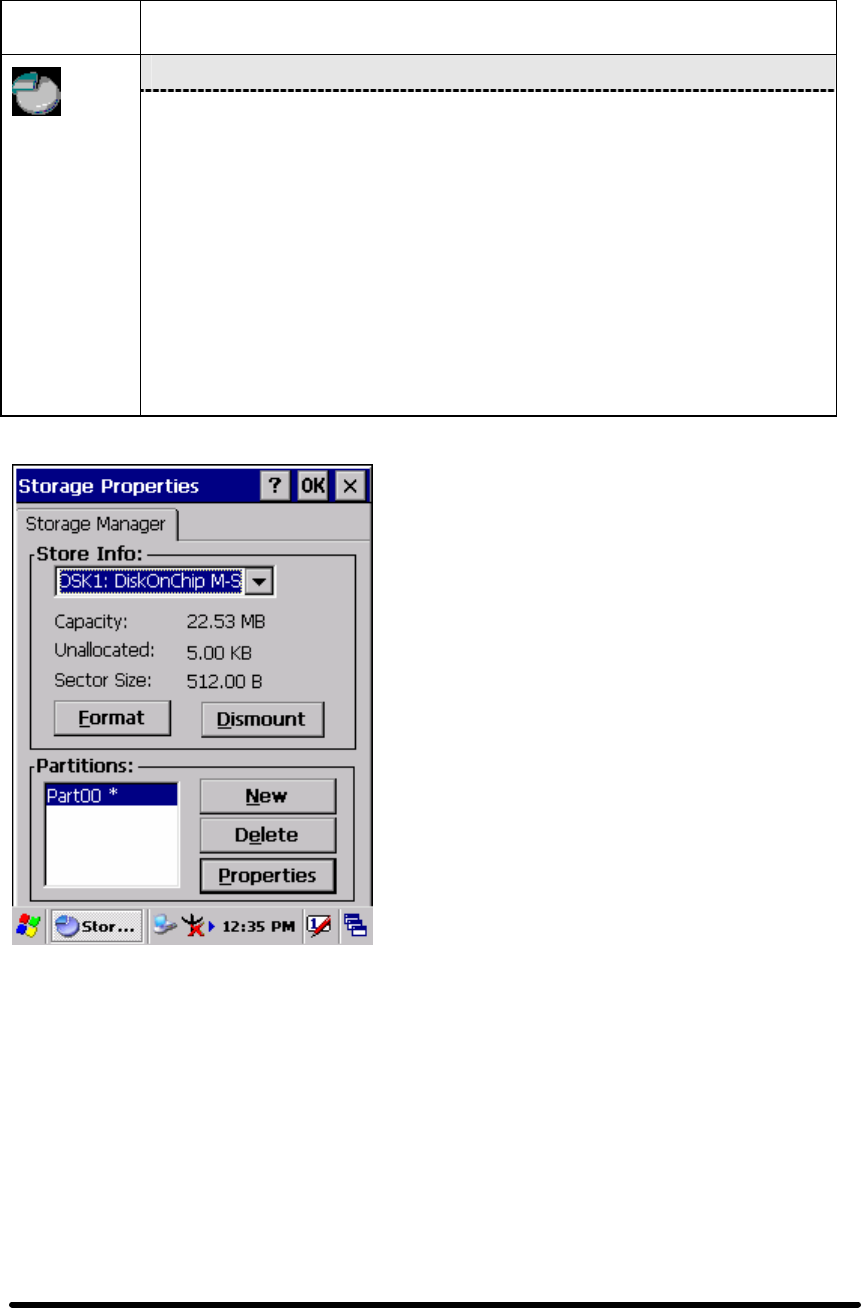
Table 3-22 Storage Manager(B)
ICON ITEM & FUNCTION
l “Storage Manager” Tab : (Figure 3-20)
Storage
manager
Ø From the “Storage Info” pull-down list, select the desired
storage device.
Ø You can also format, dismount, and create partitions on storage
devices using this control panel.
Ø To save and exit the Storage Properties control panel, press
“OK” from the control bar, or press the <Enter> key on the
keypad.
Caution: Dismounting or formatting the DiskOnChip will
erase all files and program stored in Flash Memory
Figure 3-20
P3-58
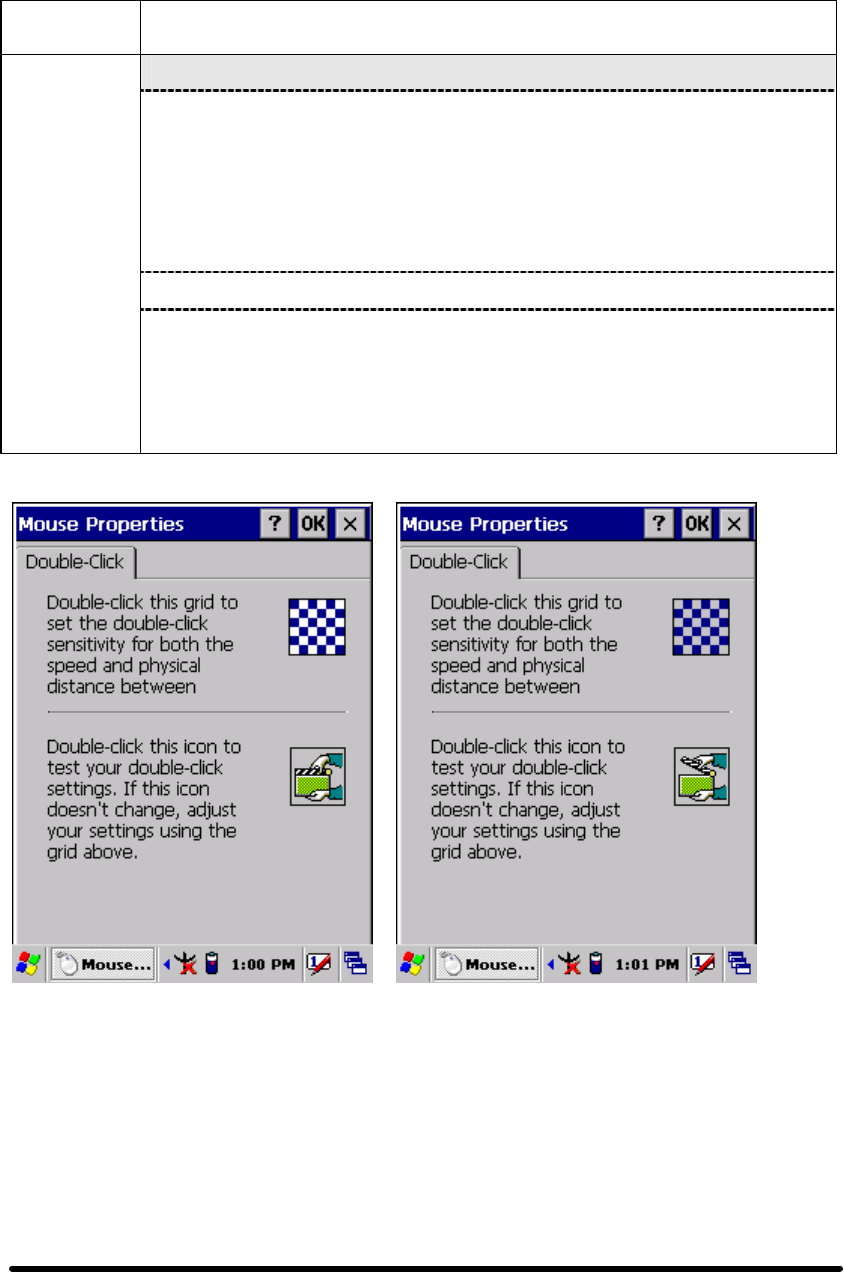
3.2.24 Stylus
Table 3-23 Stylus(A)
ICON ITEM & FUNCTION
l “Double-Tap” Tab : (Figure 3-21-1,Figure 3-21-2)
ü Double-tap the checkerboard grip at a comfortable speed.
ü Double-tap clapboard to test your settings
ü The function is OK if the figures are changed from Figure
3-21-1 to Figure 3-21-2.
ü To tap “OK” to exit the Stylus Properties.
l “Calibration”: (Figure 3-21-3)
Stylus
ü In the Welcome Wizard, you tapped a target with the stylus to set
the amount of pressure needed for the screen to respond to your
stylus taps.
ü Please also see 2.4.3: Calibration of the touch Screen
Figure 3-21-1 Figure 3-21-2
P3-59
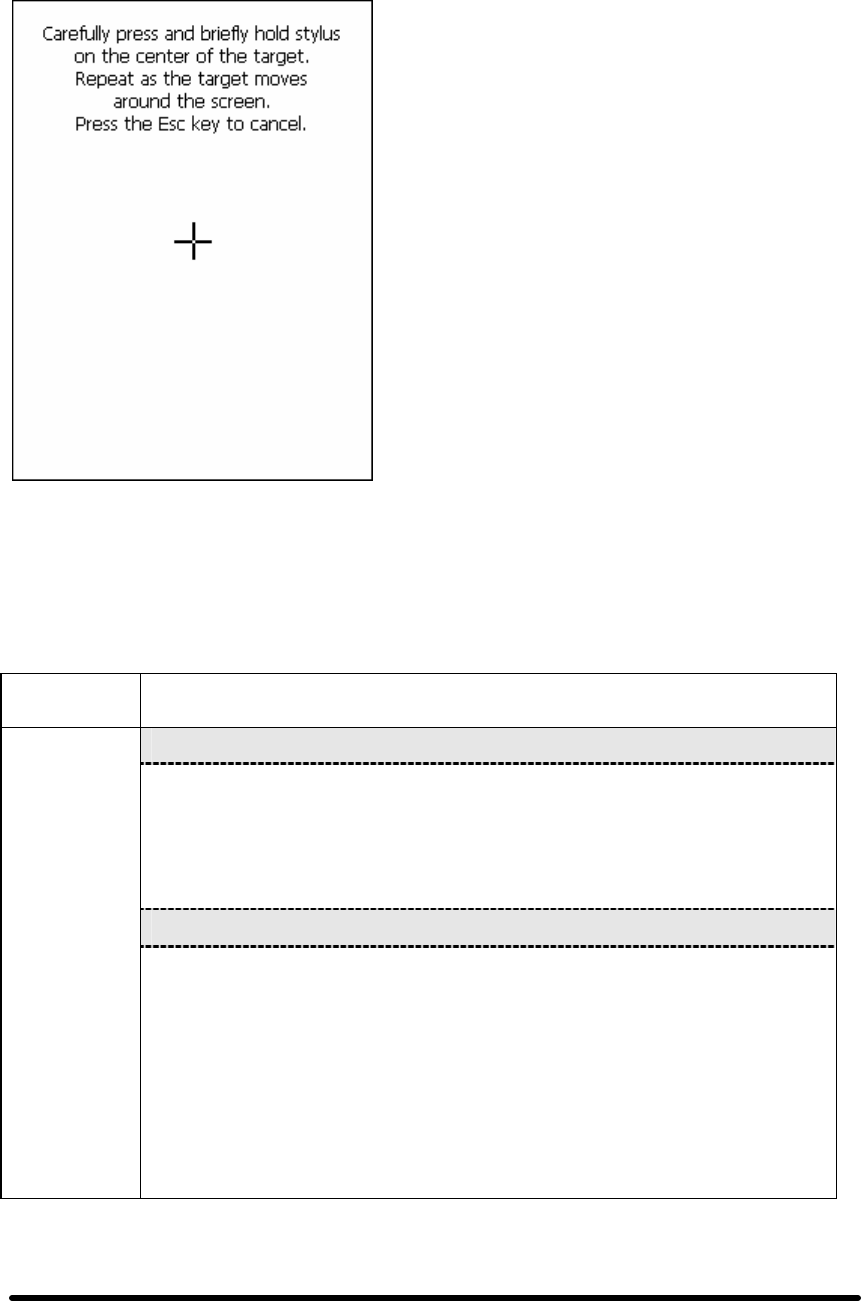
Figure 3-21-3
3.2.25 System
Table 3-24 System(A)
ICON ITEM & FUNCTION
l “General” Tab : (Figure 3-22-1)
ü To show:
Ø Firmware information
Ø Information about Processor type, Memory size, Expansion
card
l “Memory”: (Figure 3-22-2)
System
ü Move the slider to adjust memory allocation. Default storage
memory is normally is normally set to about 8MB with the
reminder assigned to Program memory.
ü Press the “OK” key on the Keypad.
Note: the difference is occupied by OS between the RAM size in
Information properties and total memory size of storage memory
and program memory
P3-60
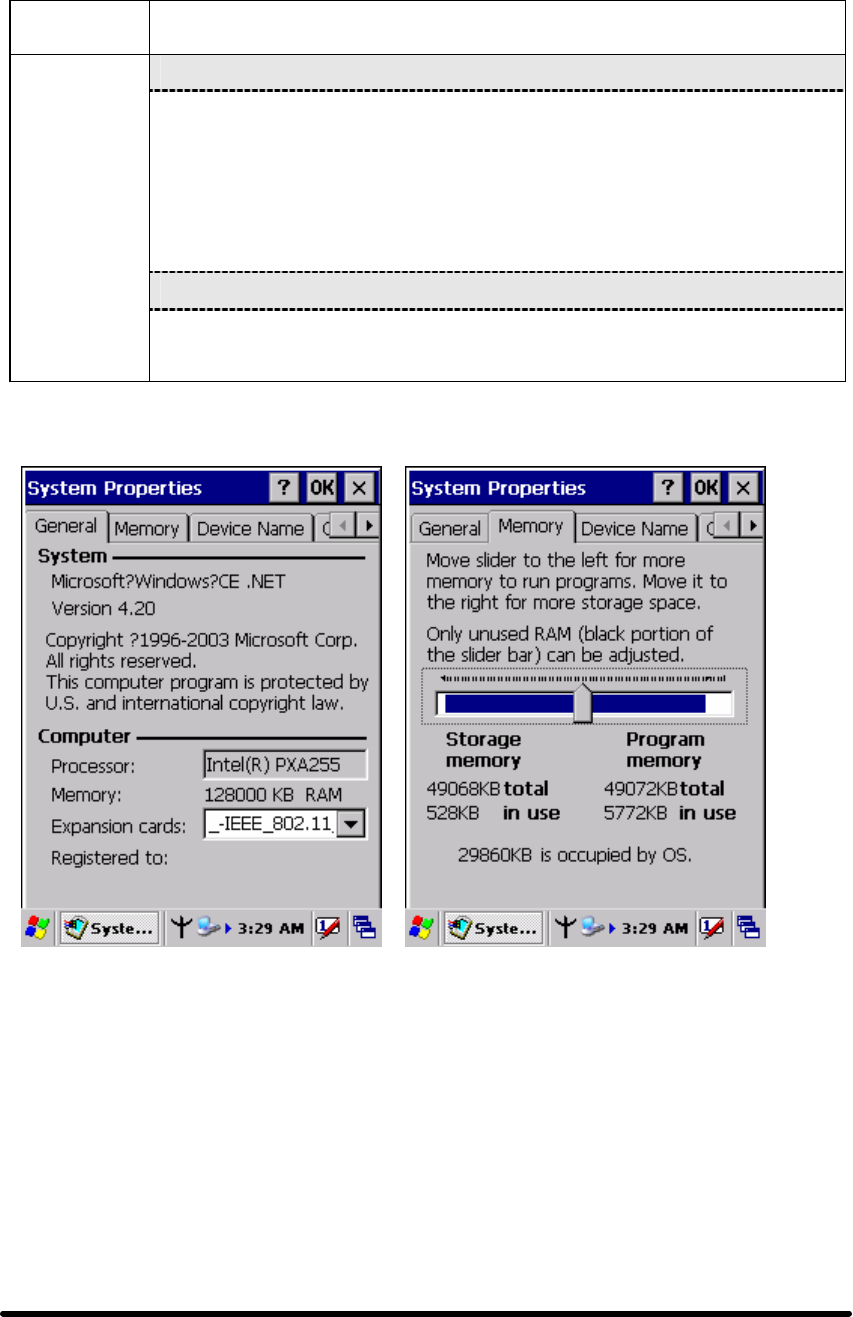
Table 3-24 System(B)
ICON ITEM & FUNCTION
l “Device Name” Tab : (Figure 3-22-3)
ü Your device uses this information to identify itself to other
computers.
ü The input panel will open to facilitate data entry.
ü To close the Device Name, press the “OK” button, or press the
<Enter> key on keypad.
l “Copyrights” Tab: (Figure3-22-4)
System
ü Refer to this tab for specific copyright data. As a user, you are
responsible to read this statement.
Figure 3-22-1 Figure 3-22-2
P3-61
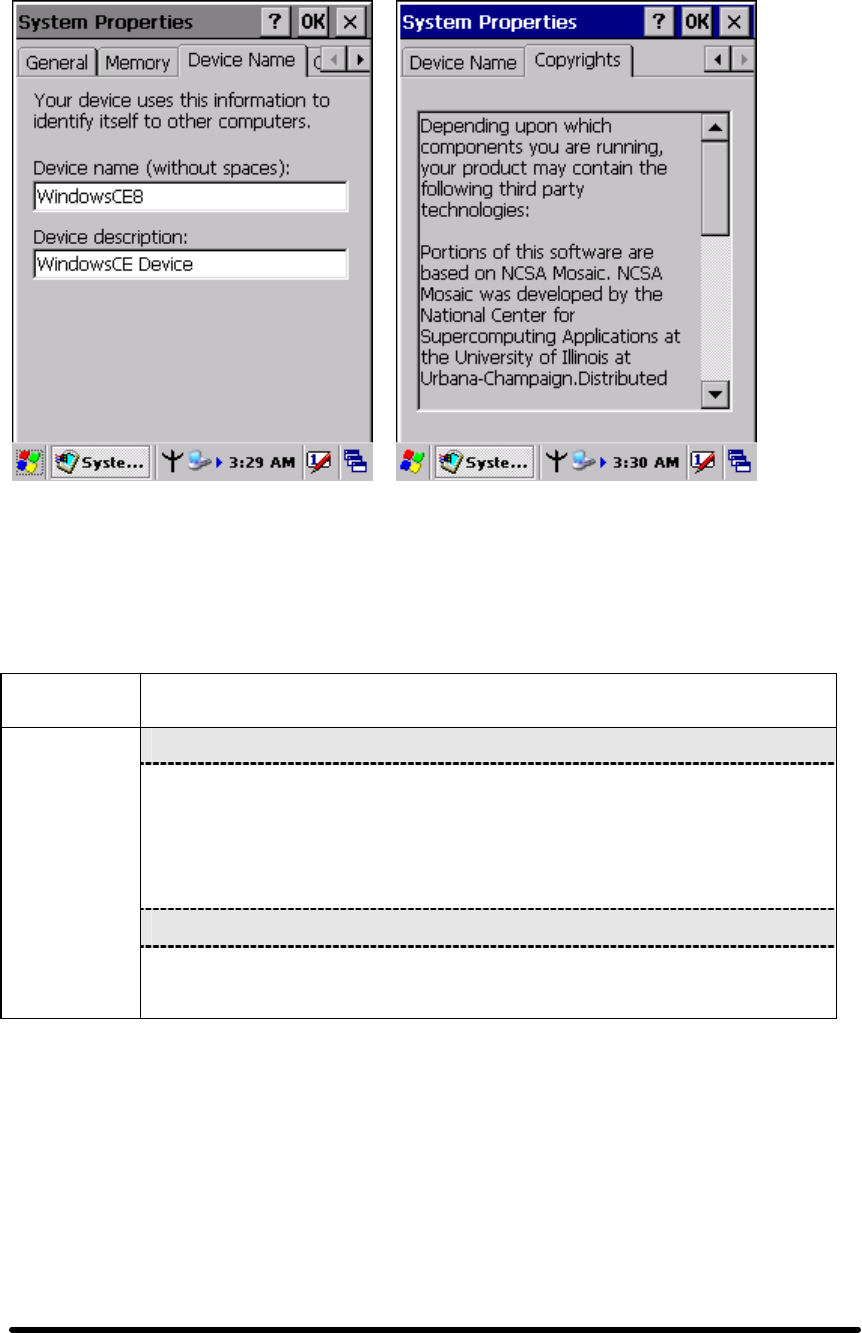
Figure 3-22-3 Figure 3-22-4
3.2.26 Volume & Sounds Properties
Table 3-25 Volume & Sound
ICON ITEM & FUNCTION
l “Volume” Tab : (Figure 3-23-1)
ü The factory default for Volume is the forth level. You can adjust
the volume to your environment and comfort.
Ø Set the volume by adjusting the slider from Soft to Loud,
or press Right or Left edge of Navigation keys
l “Sounds ” Tab: (Figure3-23-2)
Volume &
Sound
ü Enable the desired sounds for key clicks, screen taps,
notifications, and applications.
P3-62
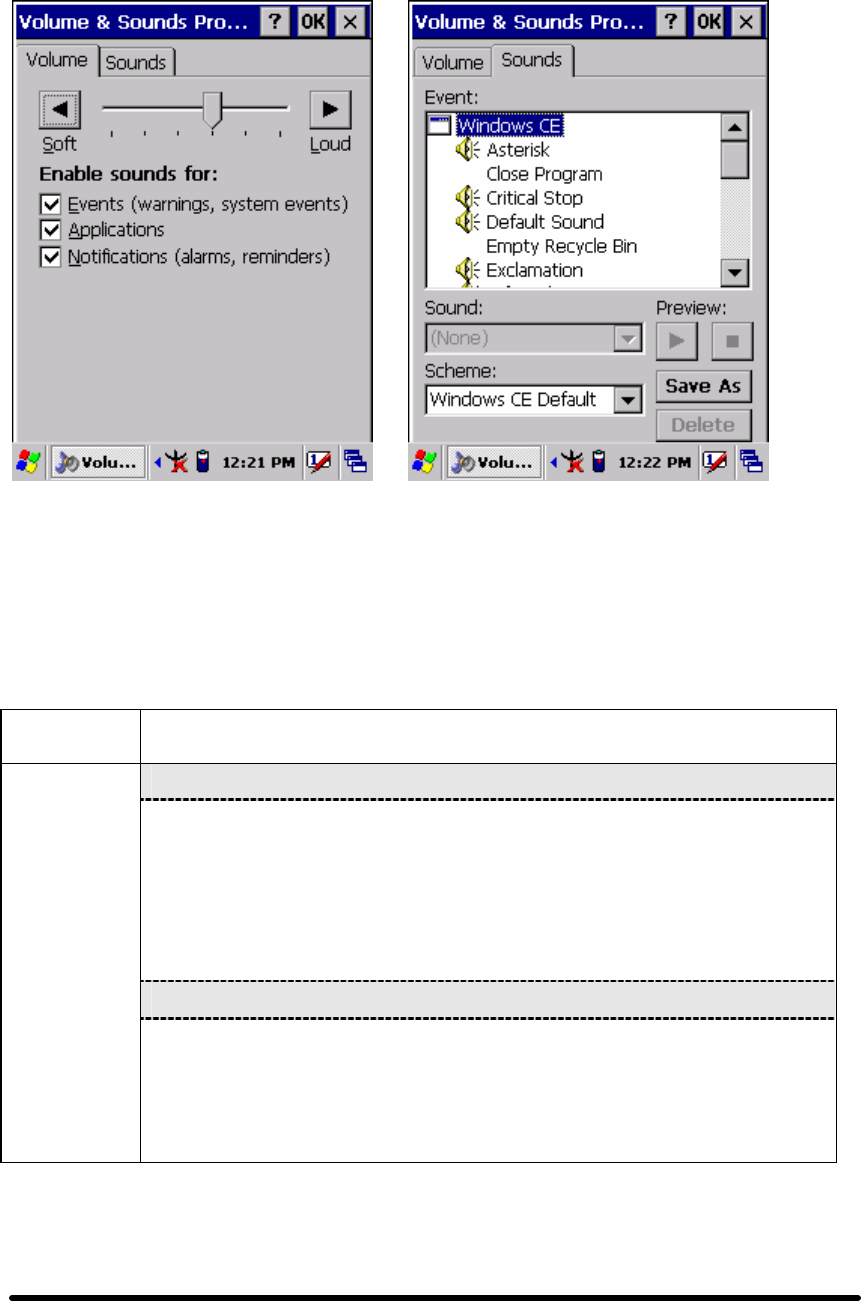
Figure 3-23-1 Figure 3-22-2
3.3 Taskbar and Start Menu
Table 3-26 Taskbar and Start menu
ICON ITEM & FUNCTION
l “General” Tab :
ü In this tab, You can change the position of the Taskbar and Start
menu
Ø Is always on top or not
Ø Auto hide or not
Ø Show Clock or not
l “Advanced ” Tab:
Taskbar and
Start Menu
ü Tap the “Clear” button to remove the contents of the Documents
Menu.
ü Enable “□ Expand Control Panel” to list all icons of Control
Panel from top to bottom.
P3-63

Chapter 4
Communication
4.1 Installing & Setting Up Microsoft ActiveSync
4.1.1 Installing Microsoft ActiveSync on the Host PC
Microsoft ActiveSync is a file transfer tool to synchronize the files on a PC with the
files on your PDA.
To install Microsoft ActiveSync, complete the following steps on the PC:
1. Go to the Microsoft Windows CE.NET website and download the most current
version of ActiveSync:
http://www.microsoft.com/mobile/pockeypc/downloads/ .
2. Install the most version of Microsoft ActiveSync on the host PC.
3. Open ActiveSync.
4. Select File > Communication Settings from AtiveSync’s menu bar.
5. Go to “Using ActiveSync” on page X.X to continue using ActiveSync.
4.1.2 Connecting PDA to Host PC
1. You can use either the USB/Serial(RS232) port of Single Dock or a
USB/Serial(RS232) cable to connect the PDA to the Host PC.
l To use the dock, you must first insert the PDA into the slot, making sure that the
unit is firmly seated the dock.
l To use the cable, connect the USB/Serial cable to the PDA.
2. Connect the USB/Serial dock or cable to the Host PC’s serial port or USB port.
3. Connect the dock or PDA to the power adapter and power source.
4.2 Using ActiveSync
Use ActiveSync to transfer and synchronize files between the PDA and the Host PC.
4.2.1 Setting up a Partnership
During the Microsoft ActiveSync installation, you were prompted to create a
P4-1
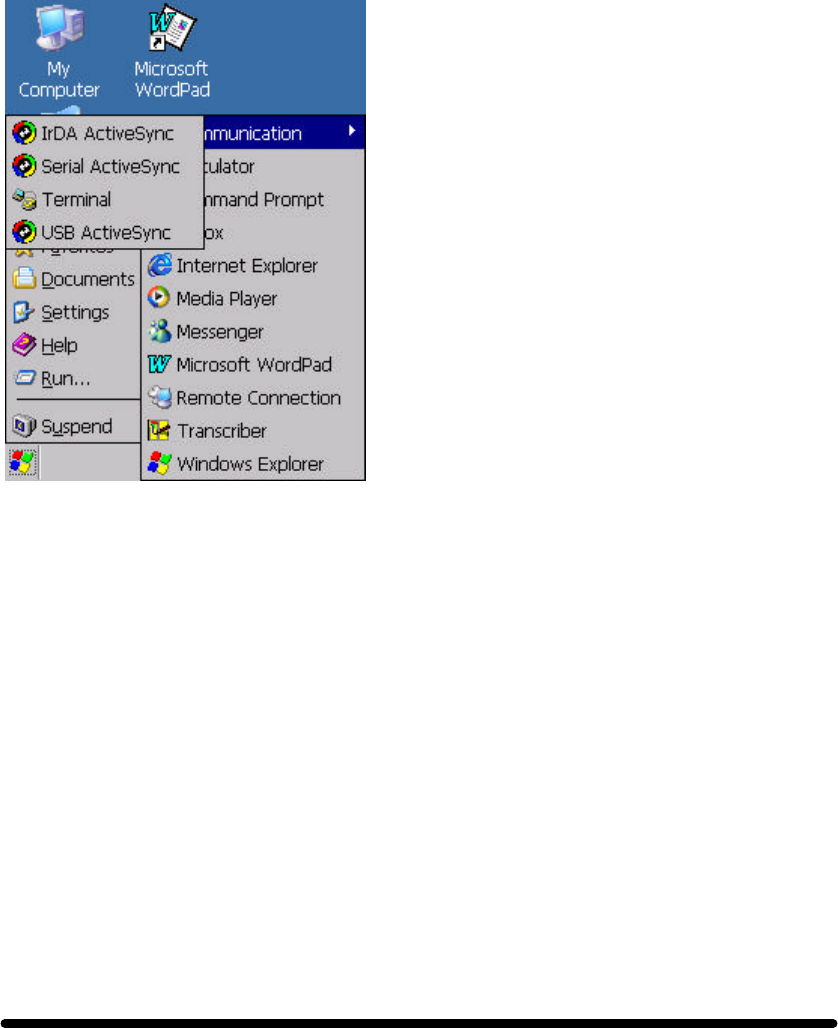
partnership with your mobile device. When you set up a partnership, you select
synchronization and file conversation settings, which are contained in a file on your
desktop computer. This file enables your desktop computer to recognize your device.
Only devices that have a partnership with a desktop computer can synchronize
information between the two computers.
For more information on partnerships, please refer to your Microsoft ActiveSync
documentation or help file.
ü Navigate to the target directory on your PDA and copy the desired file by using
the Copy/paste method or dragging and dropping the desired file(s) into the
folder.
4.2.2 ActiveSync File Synchronization
ActiveSync files synchronization requires an ActiveSync partnership between the
PDA and the Host PC. Refer to “Setting up a Partnership”, above:
ü Select the files in the synchronization configuration for the PDA partnership.
ü Select Tools > Options from the ActiveSync command bar to configure the
synchronization options.
ü Place the file to be synchronized in the Synchronization folder created you’re
My Documents directory. Defaults to the desktop. During the ActiveSync
connection, all files in the Synchronization folder will be synchronized to the
\My Documents directory on the PDA.
P4-2
Transferring Files:
To transfer files, complete the
following steps on the host PC:
ü Select Start> Programs
>Communication >(IrDA,
Serial, or USB) Activesync.
ü Double-click on the selected
ActiveSync icon
ü After you have established a
connection with PDA, tap the
“Explore” button at the top of
the ActiveSync window ( or
select Explore from the File
menu).

4.2 Networking
Please see the 3.2.17 Owner, Table 3-16 Owner on page 3-50 for setting up the
network ID. And see the 2.5.6 Initiating a Network Connection to setup the
802.11b Wireless LAN for RF connecting.
P4-3